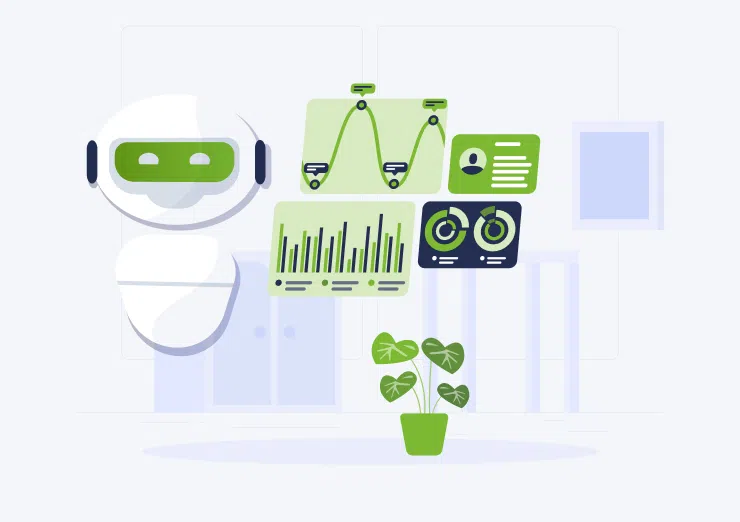ERP System for Dental Practice Management: Cost and Features
ERP systems for dental practice management are suitable for any company that wants to increase efficiency and accuracy of their business processes, improve customer experience and boost profits. For dental clinics, laboratories, and other organizations, ERP systems can help manage appointments, inventory, and finances by providing centralized management of data, finances, and processes.
In this article, using the example of a software application for dental clinics created by SDH, the key features and tools that are used to write ERP software will be viewed.
What is Dental ERP?
Dental ERP is a type of software system specifically designed for dental clinics to manage their business operations and improve efficiency. Dental ERP systems typically integrate various functions such as patient appointment scheduling, patient data management, billing and payment processing, inventory management, and financial reporting.
With an ERP system, dental clinics can streamline their operations by automating tasks such as scheduling appointments, billing and payment processing, and inventory management.
This helps to increase efficiency and productivity, as well as to structure patient data. Dental ERP systems can also provide real-time data and analytics, enabling dental clinics to make data-driven decisions and improve overall business efficiency.
Basic functions of Dental ERP software:
- Online appointment with a doctor
- Convenient management of patient card
- Dental chart
- Schedule of the clinic and doctors
- Integration with E-health system
- Conducting receptions
- Creation of treatment plans for a patient
- Billing & Invoicing management
Key features of dental ERP
An EHR-based dental software application may include the following peculiarities:
- HL7 architecture for standardized data exchange and seamless integration with other eHealth providers;
- Structured data to document patient care according to standards;
- Employee‘s Management – an option which you can manage employees, supervise shifts and holidays with;
- Templates for clinical and non-clinical documentation;
- Specialization of dental functions - periodontics, endodontics, etc;
- Branches Management;
- Reminders and confirmations;
- Patient Profile & EHR – the ability to flexibly customize the patient's medical record with all personal data and special health notes;
- Possibility of online booking appointments;
- Quizzes for the patient - a questionnaire for the patient to simplify the work of the registry;
- Built-in medical reference books that meet the standards of the global community of dentists;
- File uploader;
- Dental Image Storage;
- Appointment calendar with drap and drog, a dashboard with workload and receptions by week, month.
At the same time, a software product in the field of medicine must be compliance-friendly with regulatory standards such as HIPAA, HL7, CDA, CCD, QRDA, DICOM, NwHIN, and other regulatory standards for medical communication.
The integration of electronic health records (EHR) in the field of dentistry is slower and with more obstacles when compared with other areas of medicine. This is because dentists do not have to use EHR. However, inspite of fewer incentives to implement EHR, developing and integrating a software application that works with EHR offers numerous benefits to dental business owners.
All data and tools necessary for work are usually stored on a secure cloud server.
|
Benefits |
Drawbacks |
|
Improved patient care |
Initial implementation costs can be high |
|
Streamlined dental office operations |
Staff may require training to use the system effectively |
|
Enhanced efficiency and productivity |
System downtime or technical issues can disrupt office operations |
|
Better patient communication |
Requires ongoing maintenance and updates |
|
Improved accuracy and completeness of patient records |
System security vulnerabilities may pose a risk to patient data |
|
Enhanced billing and revenue management |
Dependence on technology can lead to reduced personal interaction with patients |
Read also: Healthcare Apps: Development Cost & Features
The technical stack needed to develop a dental ERP
The following technologies are often used in the development of medical systems:
- Programming languages: Java, Python, PHP, Swift, Kotlin, JavaScript;
- Databases: MySQL, PostgreSQL;
- Analytics: Google Analytics, Optimizely, Amazon EMR;
- Frameworks and Libraries: Django, Node.js, Bootstrap, Angular, jQuery;
- Utilities & Cloud: Amazon S3, Cloudflare, GCP, IBM, Hetzner, Digital ocean;
- Web server: HTTP - server Apache, Nginx;
- Payment Gateway: Stripe, Braintree, PayPal
To implement such SDH web projects, the SDH team uses Python with modern Django and aio frameworks (asynchronous Python) for backend development, JavaScript, React for frontend; databases - PostgreSQL, MongoDB; servers - Amazon S3 and other technologies.
Stages of developing an ERP system for dentists
The development of an ERP system for dental practice management includes a number of steps and tasks, such as:
- Analysis of requirements and identification of the main functional requirements for the system, its capabilities and functions, outlining the scope, budgeting and planning of the development.
- System design and construction, architecture selection, database design, user interface, interface design.
- Functionality development: writing code that includes dental practice management functions such as patient management, appointment booking, service list management, financial management, etc.
- Testing and debugging, finding and fixing bugs, troubleshooting and improving performance.
- Deployment and configuration of the system on the server, integration with other systems and applications.
- Users’ training, users support, updating and improving the system according to customer requirements
- Data security, tamper protection, data backup.
- Support and development: providing continuous support and system updates, improving and developing functionality in accordance with customer needs and changes in the dental industry.
Development deadlines of dental ERP for MVP
An MVP for an ERP system for managing a network of dental clinics should contain various functionalities. Development deadlines depend on many factors, including the complexity of the project, design, scope of functionality, availability of resources, and development teams.
|
Functionality |
Description |
Estimated delivery times |
|
Patient management |
Functionality that allows you to register new patients, maintain a database of patients, their medical history and appointments. |
2-3 weeks |
|
Calendar and appointment management |
Functionality that allows patients to make an appointment online, as well as manage the schedule of doctors and staff.. |
4 weeks |
|
Financial management |
Functionality that allows you to track financial transactions, including invoicing, payment, expense, tax, and reporting. |
6 weeks |
|
Pharmaceutical and inventory management |
Functionality that allows you to manage the stocks of materials, tools, medicines and other resources necessary for the operation of clinics. |
2-3 weeks |
|
Reporting and analytics |
Functionality that allows you to generate reports on financial transactions, orders, appointments, and analyze data to improve the efficiency of clinics. |
3 weeks |
|
Integration with other systems |
Functionality that allows integration with other systems such as accounting system, inventory management system, analytical tools, etc. |
4-8 weeks |
|
Reference books of diseases |
Built-in medical directories ICD-10 - CM and Dental procedure, recognized by the world medical community. |
1 week |
|
Dental record(dental chart) |
Functionality that allows you to visualize the patient's teeth, fix dental diseases, prescribe treatment. |
4-8 weeks |
These are approximate estimations of development timelines, assuming the development team has the necessary skills and resources to complete the work. Specific terms can be set at the stage of a detailed assessment of the project and the development of a work plan.
The cost of developing a dental ERP system
The budget for the development of a health care system includes the payment of the contractor, as well as the cost of maintaining the product. The cost varies greatly depending on the features of the program, its performance, complexity, as well as the technology stack used in development. The role and factors associated with the development team, or rather, its geographical localization, also count. The average cost of setting up a healthcare system is about $500,000, but of course, it can be much lower or higher.
ERP software integration will give you the boost to grow and scale your dental practice. The Software Development Hub will help you create a flexible and functional dental management product that meets your business needs and sets you apart from the competition. We'll help you optimize your budget and identify the features you need for your application.
Software Development Hub has extensive experience in creating web applications and mobile applications for healthcare businesses. When working on a project, our team takes into account the business challenges the client faces and offers safe, efficient solutions to automate processes and scale your operations while reducing costs.
Categories
Share
Need a project estimate?
Drop us a line, and we provide you with a qualified consultation.










